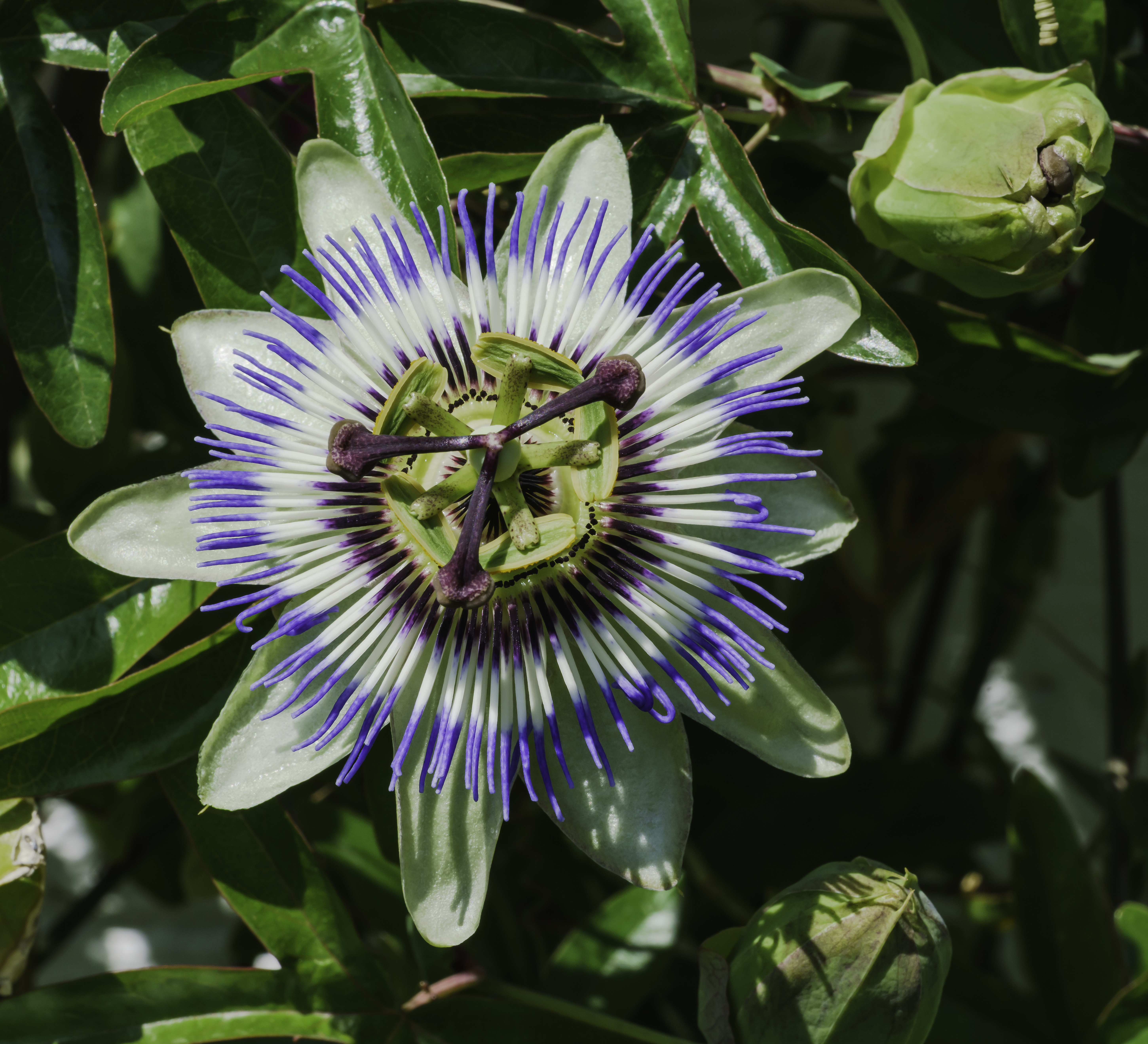The Passiflora caerulea, also known as the Blue Passionflower, is a stunning vine with intricate, exotic blooms. While it can be a rewarding plant to cultivate, it does require specific care to thrive. Here’s a comprehensive guide to caring for your Passiflora caerulea.
Growing Your Passionflower
Sunlight:
Passiflora caerulea thrives in full sun to partial shade. Aim for a location that receives at least 6 hours of direct sunlight daily. However, be mindful of intense afternoon sun, especially in hot climates, as it can scorch the leaves.
Temperature:
These plants are relatively tolerant of temperature fluctuations. They can withstand mild frosts, but prolonged exposure to freezing temperatures can damage or kill the vine. Ideally, maintain a temperature range of 60-80°F (15-27°C) for optimal growth.
Humidity:
While they can tolerate average humidity levels, Passiflora caerulea appreciates higher humidity. Consider misting the plant regularly, especially during dry periods. Alternatively, placing a humidity tray or using a room humidifier can help maintain suitable humidity levels.

Soil:
The ideal soil for Passiflora caerulea is well-draining, fertile, and slightly acidic. A well-balanced potting mix that retains moisture but avoids waterlogging is suitable. You can also add organic matter like compost or well-rotted manure to improve soil fertility.
Support:
As a vigorous climber, Passiflora caerulea requires sturdy support to grow. Provide a trellis, fence, or other suitable structure for the vine to cling to. Regularly tie the growing tendrils to the support to encourage upward growth and prevent tangling.
Fertilizing Your Passionflower
Fertilizing your Passiflora caerulea is essential for promoting healthy growth and abundant blooms. Use a balanced liquid fertilizer diluted to half strength every two weeks during the growing season (spring and summer). Avoid over-fertilization, as it can lead to excessive foliage growth at the expense of flowering.
Blooming Your Passionflower
To encourage blooming, ensure your Passiflora caerulea receives adequate sunlight and nutrients. Proper watering and fertilization are crucial for stimulating flower production. Additionally, pruning can help stimulate new growth and promote flowering.
Watering Your Passionflower

Proper watering is key to the health of your Passiflora caerulea. Water your plant deeply and thoroughly, allowing the soil to dry slightly between waterings. Avoid overwatering, as it can lead to root rot. During the growing season, increase watering frequency, especially in hot and dry conditions.
In conclusion, with proper care and attention, your Passiflora caerulea can thrive and reward you with its stunning blooms. Remember to provide adequate sunlight, well-draining soil, regular fertilization, and appropriate watering to ensure a healthy and vibrant plant.

